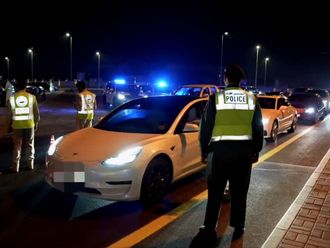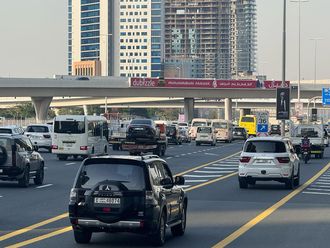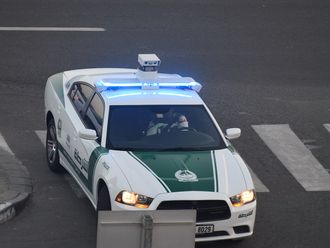If a driver cannot find his way or if he is unsure about how fast he was going, help is on the way. A smart box, developed by UAE University (UAEU) and computer giant IBM, will soon be available to keep a telemetric check on road safety.
Offering motorists a host of other options, the hi-tech device to be installed in vehicles has been described as "the world's first in many ways" by the developers, who have spent Dh10 million on the project.
In an exclusive demonstration of the prototype for Gulf News, the voice-enabled machine, which is mounted in a car, issues verbal warnings when the speed limit is violated and displays high-precision road maps via a Global Positioning System (GPS).
It also generates SMS messages to notify the main control (the police or the owner of the vehicle) about speed violations and where they were committed, along with many other tasks the driver can programme.
A prototype of this multi-purpose device is being tested at the IT laboratories of the college of information technology (CIT) at UAEU.
The final product, which will look like a personal digital assistant (PDA), is expected to be on the market by March. The university has planned its first spin-off company the first by an educational institution in the Arab world for the large-scale manufacture and marketing of the smart box.
"We are really proud of this invention because it is the first hi-tech IT device developed in the region, known for only hiring and acquiring technologies from others," said Dr Ali Rashid Al Nuaimi, deputy vice-chancellor of UAEU.
Describing it as an important national achievement, Dr Al Nuaimi said the project will set the course for more IT innovations here.
Dr Rafic Z. Makki, dean of CIT, said the spin-off company based in Al Ain will be launched on November 1, with commercial branches in Dubai and Abu Dhabi. "The company will operate under the auspices of UAE University, which will fund or arrange finance for it."
The device was the brain-child of IBM, which also designed it under an agreement with the university signed in May by Dr Hadef Bin Jouan Al Daheri, vice-chancellor of the university, and Michael Wirth, director of engineering and technology service of IBM Deutschland GmbH.
The box is a touch-screen operable device that needs user identification through a security card. In the testing phase, only Al Ain's road maps have been fed into the device as well as such traffic details as speed limits.
On the street, the smart box identifies the location with the help of its GPS. The name of the road along with other necessary details appear on the screen. When the driver exceeds the speed limit, the machine first warns him and then informs the main control if the driver does not heed the warning.
"It is a voice-enabled machine that can hear a command and reply in a human voice," Makki said. "Being highly programmable, it can be used to perform many tasks. The device can also send an SMS message to the car owner or police about any traffic violations committed by the driver."
Most of the devise's features are optional and it is easily programmable.
The device, Makki said, can show the exact location of the vehicle, and the vehicle owner can also talk to the driver from his home or office through a website.
"It will also be able to handle e-mails, phone calls and even open the door for the driver or the passengers," he said.
Verbal warning, SMS messages
The smart box installed in vehicles issues verbal warnings when the speed limit is violated and displays road maps via a Global Positioning System (GPS).
It also generates SMS messages to notify the main control (the police or the owner of the vehicle) about speed violations and where they were committed and other tasks the driver can programme.
It provides real-time data to the driver and transmits data to a computer server for analysis at the control station.
The box is Bluetooth-enabled, so it can transmit the data to the owner or the police even when the GPS network is down.
The device uses four microprocessors based on power architecture that can take over each other's functions in case a fault develops in one of them.










